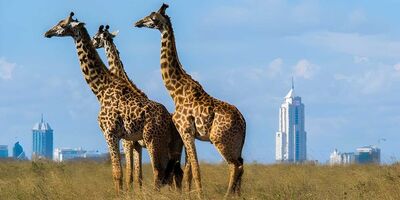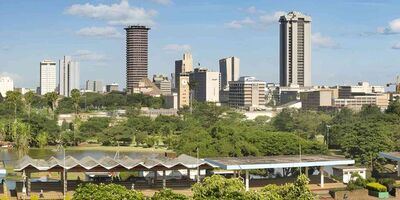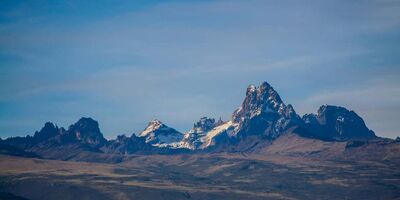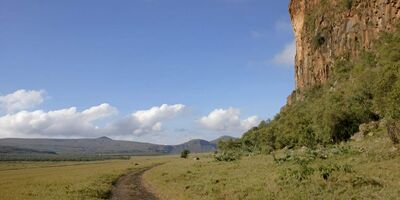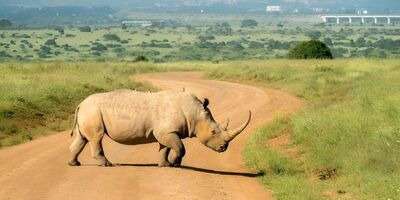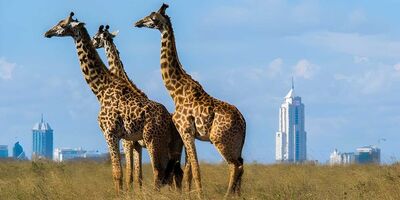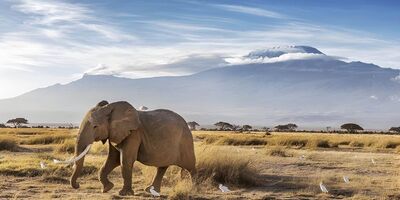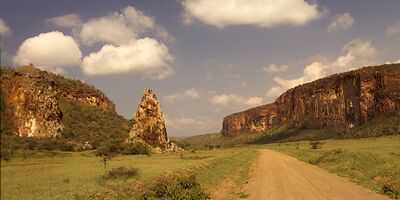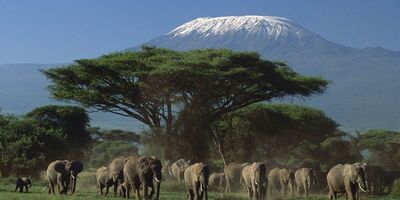About Ivory-burning Site
The Ivory-Burning Site in Nairobi is a poignant and powerful landmark dedicated to wildlife conservation. Located in Nairobi National Park, this site is renowned for its historical ivory burnings, which symbolize Kenya's commitment to fighting illegal wildlife trade and protecting endangered species. It serves as an important reminder of the ongoing efforts to combat poaching and preserve wildlife for future generations.
Key Highlights
1. Historical Significance
- Ivory Burnings: The site is best known for the ceremonial burning of confiscated ivory, which began in 1989 under the leadership of then-President Daniel arap Moi. These events have been crucial in raising awareness about the devastating impact of ivory trade on elephant populations.
- Symbolic Actions: The burning of ivory represents Kenya’s stance against poaching and illegal wildlife trade, showcasing the country’s dedication to conservation and the protection of endangered species.
2. Educational Experience
- Informative Exhibits: The site features informative displays about the ivory trade, poaching, and conservation efforts. Learn about the historical context, the impact on wildlife, and the steps taken to address these challenges.
- Conservation Messages: Gain insights into the broader conservation efforts in Kenya and the role of organizations and government bodies in protecting wildlife.
3. Scenic Location
- Nairobi National Park: The Ivory-Burning Site is located within Nairobi National Park, offering visitors a chance to explore the park’s diverse wildlife and enjoy the natural beauty of the area.
How to Get There
By Air
- From Nairobi Airport: The Ivory-Burning Site is easily accessible from Jomo Kenyatta International Airport. A short drive of about 30 minutes will take you to the park entrance, where you can proceed to the site.
By Road
- From Nairobi City Center: Drive from Nairobi city center to Nairobi National Park, located approximately 7 kilometers south of the city. The drive takes about 15-20 minutes. Follow signs to the park entrance and proceed to the Ivory-Burning Site.
By Tour Package
- Guided Tours: Many tour operators offer packages that include transportation to Nairobi National Park, a visit to the Ivory-Burning Site, and guided tours of the park. This option can enhance your experience and provide valuable context.
Opening Hours and Admission Fees
- Opening Hours: Nairobi National Park, including the Ivory-Burning Site, is generally open from 6:00 AM to 6:00 PM daily. Confirm specific hours and any special closures before your visit.
- Admission Fees: There is an entrance fee for Nairobi National Park, which includes access to the Ivory-Burning Site. Fees vary for international visitors and residents. Additional costs may apply for guided tours. Verify current rates before your visit.
Things to Do and See
Explore the Ivory-Burning Site
- Historical Exhibits: View exhibits and information about the ivory burnings, the impact of the ivory trade, and Kenya’s conservation efforts.
- Symbolic Significance: Reflect on the significance of the ivory burnings and their role in global conservation movements.
Visit Nairobi National Park
- Wildlife Viewing: Explore Nairobi National Park, home to a variety of wildlife including lions, giraffes, zebras, and rhinos. The park offers a unique opportunity to see wildlife in a natural setting close to the city.
- Scenic Drives: Enjoy scenic drives through the park, taking in the diverse landscapes and spotting wildlife along the way.
Where to Eat
On-Site Dining
- Picnic: There are limited dining options directly at the Ivory-Burning Site. Consider bringing a picnic to enjoy within Nairobi National Park. Designated picnic areas may be available.
Nearby Restaurants
- In Nairobi: For dining options, visit Nairobi city center, including:
- The Carnivore Restaurant: Offers a range of meals with a focus on grilled meats and a unique dining experience.
- Sarova Stanley: Provides a variety of meals in a historic and elegant setting.
Where to Stay
Accommodation Options
- In Nairobi: Consider staying in Nairobi for easy access to Nairobi National Park and the Ivory-Burning Site, with options such as:
- Giraffe Manor: Offers luxurious accommodations with a focus on conservation and close proximity to giraffe viewing.
- Sarova Panafric: Provides comfortable lodging with modern amenities and easy access to city attractions.
Nearby Lodges
- Within Nairobi National Park: For a more immersive experience, consider staying in lodges or camps within or near the park, such as:
- Nairobi Tented Camp: Offers a unique tented safari experience within the park, providing easy access to wildlife viewing and conservation sites.
Travel Tips
- Plan Your Visit: Check opening hours and any necessary permits or fees in advance. Consider hiring a guide for a more informative experience.
- Prepare for the Weather: The weather can vary, so dress in layers and bring sun protection, a hat, and comfortable walking shoes.
- Respect the Site: Follow local guidelines to protect the historical and environmental integrity of the Ivory-Burning Site and Nairobi National Park.
FAQs
1. What is the best time to visit the Ivory-Burning Site?
The best time to visit is during the dry season from June to October when the weather is favorable for exploring Nairobi National Park and the Ivory-Burning Site.
2. Are guided tours available at the Ivory-Burning Site?
Yes, guided tours are available and can provide valuable insights into the historical and conservation significance of the site. It’s recommended to book in advance.
3. Is there an admission fee to visit the Ivory-Burning Site?
There is an entrance fee for Nairobi National Park, which includes access to the Ivory-Burning Site. Additional fees may apply for guided tours. Confirm current rates before your visit.
4. Can I visit the Ivory-Burning Site on a day trip from Nairobi?
Yes, it is possible to visit the Ivory-Burning Site on a day trip from Nairobi. Arrange transportation and guided tours in advance for a smooth visit.
5. What should I bring for a visit to the Ivory-Burning Site?
Bring comfortable walking shoes, sun protection, a hat, a camera, and a picnic if you plan to eat on-site.
Conclusion
The Ivory-Burning Site in Nairobi is a significant landmark in the fight against illegal wildlife trade and a symbol of Kenya’s dedication to conservation. Whether you’re exploring the historical exhibits, reflecting on the impact of ivory burnings, or enjoying the wildlife and scenery of Nairobi National Park, the site offers a meaningful and educational experience. Plan your visit to understand the vital role of conservation efforts and appreciate Kenya’s commitment to protecting endangered species.
Location & Places to Visit on Ivory-burning Site Map
View destinations and attractions nearby Ivory-burning Site, on an interactive map.
Freedom to make your own trip!
What you want, when you want and how you want.
















